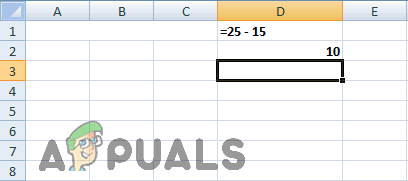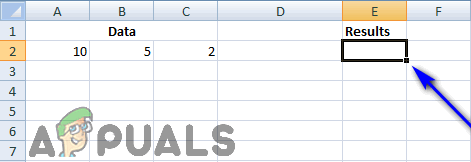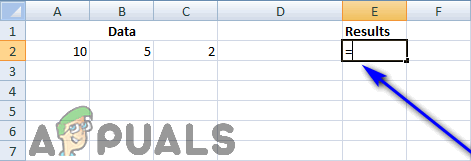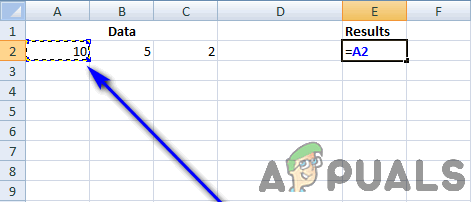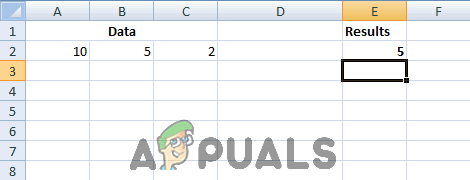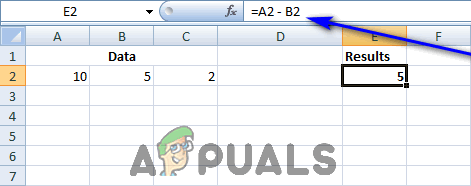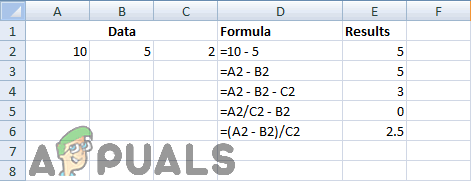Excel Formulae: A Basic Guide
Formulae are the medium you use in Excel to instruct the program to perform certain operations, usually mathematical, and to tell the program where the respective operation needs to be performed. We’ll only be dealing with subtraction formulae in this guide, and here’s all the technical details you need to know for the purposes of creating and using subtraction formulae in Excel to get the program to perform subtraction operations for you:
To create a formula in Excel, you use the equal sign (=). The equal sign informs the program that whatever follows the symbol is a formula.In an Excel formula, you can use both actual data (numbers, for example) as well as cell references (alphanumerical references to the cell(s) of the spreadsheet containing the data you want the respective operation to be performed on.In Excel, a formula for an operation you want the program to perform is typed into the cell you want the result of the operation to be displayed in.We’ll only be dealing with formulae for subtraction operations in this guide, and the symbol for the subtraction operation in Excel is the dash (–).Excel perceives a formula as complete when the user presses the Enter key, so whatever operation you create a formula for is performed when you type in the formula and press Enter.
Creating a Formula for a Subtraction Operation
There’s a lot to know about Excel formulae, but once you have the basics of the concept down, you’re ready to go on and create your own formula and put it to practical use. If you would like to create a subtraction formula in Excel to have the program perform subtraction operations for you, here’s how you can go about doing so: Note: The steps listed and described below are based on an instance where the user wants Excel to subtract 5, the data contained in cell B2 of their spreadsheet, from 10, the data that cell A2 of their spreadsheet contains. The steps will remain the same regardless of what your exact circumstances are – you’ll just need to make small modifications to elements such as the data or cell references the formula is designed to operate on. As soon as you press Enter on your keyboard, Excel will perform the specified subtraction operation and the result (the number 5, in this case) will appear in the selected cell. While the selected cell will display the result of the subtraction operation, clicking on it will have the formula you created displayed in Excel’s Formula Bar.
Examples of Subtraction Formulae
If you’re still not sure what a subtraction formula in Excel is supposed to look like, here are some examples of subtraction formulae that might help you better understand the concept and its functionality: =10 – 5 =A2 – B2 =A2 – B2 – C2 =A2/C2 – B2 =(A2 – B2)/C2
Cell References in Formulae > Raw Data in Formulae
As stated before, you can use both raw data and references to the cells that contain the raw data you want to operate on when creating subtraction formulae (or any other kind of formulae, for that matter) in Excel. The recommended course of action, however, is to use cell references in any formulae that you create. Typing in the exact cell references is completely okay, but using the point and click feature to create and insert cell references into formulae almost entirely eliminates the risks that are human error and typing inaccuracy. Typing in cell references has a gargantuan upside to it – if, at any point, the raw data the selected cells contain changes even marginally, the change is automatically reflected in the cell that contains the formula as soon as changes are made to the raw data in the selected cells and the Enter key is pressed, without the user having to lift even a single finger. There’s no need to make changes to the formula if the raw data needs to be changed if you used cell references in the formula, and in the spirit of honesty, simply pointing and clicking on the cells that contain the data that needs to be operated on is obviously quicker than typing in raw data or even alphanumeric references yourself. That being the case, unless you’re entirely certain that the raw data being operated on won’t change no matter what goes down, cell references are the way to go when creating a formula. There’s obviously also the ever-present option of using a combination of both raw data and cell references within the formulae you create.
Engineering More Advanced Formulae
As mentioned on numerous occasions before, subtraction is not the only mathematical operation Excel is capable of performing, and creating formulae significantly more advanced than those used to perform subtraction operations is pretty easy. All you have to do is type in the right raw data or cell reference followed by the right mathematical operator for the operation you want Excel to perform on the data. Excel has a specific order of operations that it follows when presented with formulae for relatively more complicated mathematical operations. Excel’s order of operations goes something like this: operations enclosed in parentheses – ( and ) – before any other operations, followed by exponential calculations (4^5, for example), after which it performs multiplication and division (represented by * and / respectively), whichever comes first, followed up with addition and subtraction (represented respectively by the mathematical operators + and –), whichever comes first. Basically, Excel follows the BODMAS order of operations that is universally accepted and implemented.
Fix: Windows Resource Protection Cannot Perform the Requested OperationHow To Perform Video Streaming Using Raspberry Pi?How To Perform Time-Lapse Photography Operations Using Raspberry Pi?How to: Perform Startup Repair in Windows 8/8.1 and 10
